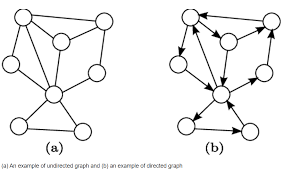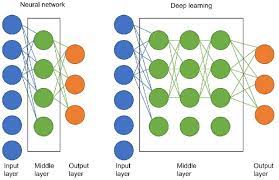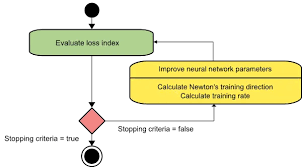Graph Neural Networks (GNNs): Revolutionizing Data Analysis and Prediction
In the realm of artificial intelligence and machine learning, Graph Neural Networks (GNNs) have emerged as a powerful tool for analyzing and making predictions on structured data. Unlike traditional neural networks that operate on grid-like data such as images or text, GNNs are designed to handle data that is represented in the form of graphs.
What sets GNNs apart is their ability to capture complex relationships and dependencies between entities in a graph, such as social networks, molecular structures, or recommendation systems. By leveraging this inherent graph structure, GNNs can effectively learn patterns and make predictions based on the connections between nodes.
One of the key strengths of GNNs lies in their ability to perform message passing between neighboring nodes in a graph. This iterative process allows information to propagate through the network, enabling each node to update its representation based on the information gathered from its neighbors. As a result, GNNs can effectively capture both local and global information within a graph, leading to more accurate predictions.
Applications of GNNs span across various domains, including social network analysis, drug discovery, recommendation systems, and more. In social network analysis, GNNs can be used to identify influential nodes or communities within a network. In drug discovery, GNNs can predict molecular properties and assist in designing new drugs with desired characteristics.
As research in GNNs continues to advance, new architectures and techniques are being developed to enhance their performance and scalability. From Graph Convolutional Networks (GCNs) to Graph Attention Networks (GATs), researchers are exploring innovative ways to leverage the power of GNNs for solving complex real-world problems.
In conclusion, Graph Neural Networks have revolutionized the field of data analysis by enabling effective modeling of graph-structured data. With their ability to capture intricate relationships within graphs and make accurate predictions, GNNs hold great promise for driving advancements in various applications and industries.
Understanding Graph Neural Networks: Key FAQs and Comparisons with Other Neural Network Models
- Is ChatGPT graph a neural network?
- How does a GNN work?
- How do you graph a neural network?
- What is a graph in GNN?
- What is the difference between GNN and LSTM?
- What is the difference between CNN and GNN?
- What is GNN neural network?
- Why is GNN better than CNN?
Is ChatGPT graph a neural network?
The frequently asked question “Is ChatGPT graph a neural network?” often arises due to the confusion surrounding the architecture of ChatGPT. ChatGPT is a language model based on the GPT (Generative Pre-trained Transformer) architecture, which is a type of transformer neural network. While ChatGPT itself is not specifically designed as a graph neural network (GNN), it utilizes transformer-based models to process and generate text data. The distinction lies in the fact that GNNs are specialized for handling graph-structured data, whereas ChatGPT focuses on natural language processing tasks.
How does a GNN work?
One of the frequently asked questions about Graph Neural Networks (GNNs) is: How does a GNN work? GNNs operate by leveraging the inherent structure of graphs to process and analyze data. At the core of a GNN is the concept of message passing, where information is exchanged between neighboring nodes in a graph. Through iterative message passing steps, each node aggregates information from its neighbors, updates its own representation, and propagates this information throughout the network. By capturing both local and global dependencies within the graph, GNNs can effectively learn patterns, make predictions, and perform various tasks on graph-structured data.
How do you graph a neural network?
Graphing a neural network involves visualizing the architecture and connections of the network in a graphical format. In the context of Graph Neural Networks (GNNs), graphing a neural network typically refers to representing the structure of the graph data and how information flows through it. Each node in the graph represents an entity, while edges denote relationships or connections between entities. By visualizing the neural network as a graph, one can gain insights into how information is processed and propagated through the network, helping to understand its behavior and performance better. This graphical representation is essential for interpreting and optimizing GNN models for various applications, such as social network analysis, recommendation systems, and more.
What is a graph in GNN?
In the context of Graph Neural Networks (GNNs), a graph refers to a mathematical structure that consists of nodes (also known as vertices) and edges (also known as links or connections) that define the relationships between the nodes. Each node in a graph represents an entity or object, while each edge represents a connection or interaction between two nodes. In GNNs, these graphs serve as the foundational data structure on which the neural network operates, allowing it to capture and leverage the complex relationships and dependencies within the data. By understanding and manipulating the graph structure effectively, GNNs can learn from interconnected data points and make informed predictions based on this relational information.
What is the difference between GNN and LSTM?
One frequently asked question in the realm of graph neural networks (GNN) is about the difference between GNN and Long Short-Term Memory (LSTM) networks. While both GNNs and LSTMs are used in machine learning for sequential data processing, they operate on different types of data structures. GNNs are specifically designed to handle graph-structured data, where nodes and edges represent entities and relationships, respectively. On the other hand, LSTMs are recurrent neural networks commonly used for processing sequential data like time series or natural language. The key distinction lies in their underlying architectures and how they capture dependencies within the data. GNNs excel at modeling complex relationships in graphs, while LSTMs are more suited for capturing temporal dependencies in sequential data.
What is the difference between CNN and GNN?
When comparing Convolutional Neural Networks (CNNs) and Graph Neural Networks (GNNs), the key difference lies in the type of data they are designed to process. CNNs are primarily used for grid-like data such as images or text, where the spatial relationships between neighboring pixels or words are important. On the other hand, GNNs are tailored for handling graph-structured data, where entities (nodes) are connected by edges that encode relationships or interactions. While CNNs excel at tasks like image classification and object detection, GNNs shine in applications involving relational data such as social networks, recommendation systems, and molecular structures. Each network architecture is optimized for its specific data format, making them complementary tools in the realm of machine learning and artificial intelligence.
What is GNN neural network?
Graph Neural Network (GNN) is a specialized type of neural network that is designed to work with graph-structured data. Unlike traditional neural networks that process grid-like data, such as images or text, GNNs are tailored to analyze and make predictions on data represented in the form of graphs. In essence, GNNs excel at capturing complex relationships and dependencies between entities within a graph, allowing them to effectively learn patterns and insights based on the connections between nodes. By leveraging techniques like message passing and graph convolution, GNNs have become a powerful tool for tasks such as social network analysis, recommendation systems, and molecular structure prediction.
Why is GNN better than CNN?
Graph Neural Networks (GNNs) offer unique advantages over Convolutional Neural Networks (CNNs) when it comes to analyzing data with complex relationships and structures. While CNNs excel at processing grid-like data such as images, GNNs are specifically designed to handle graph-structured data, where entities are interconnected in a non-linear manner. This makes GNNs particularly effective for tasks that involve modeling relationships between nodes in a graph, such as social networks or molecular structures. By enabling information propagation and message passing between nodes, GNNs can capture both local and global dependencies within a graph, leading to more accurate predictions and insights compared to CNNs in scenarios where the data is inherently graph-based.




